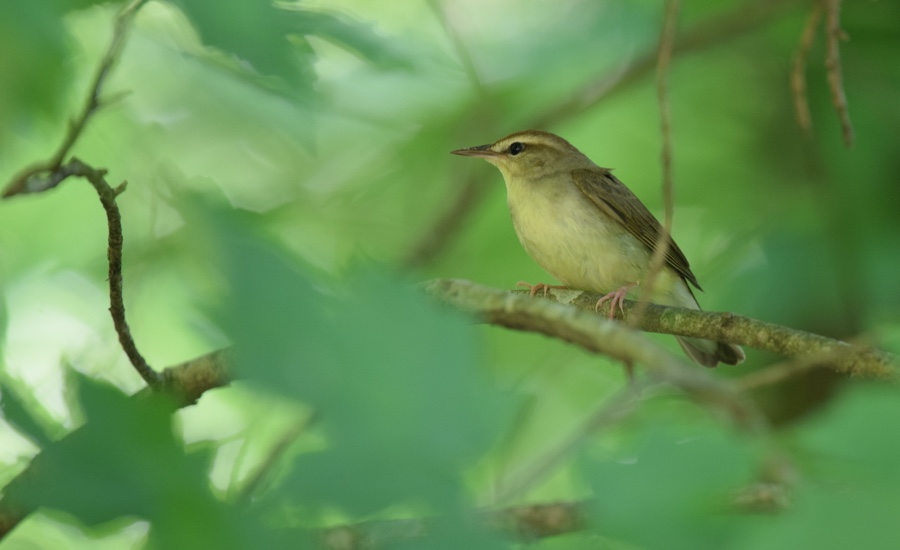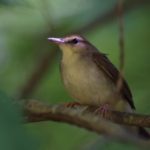
Swainson’s Warbler (Limnothlypis swainsonii)
The Swainson’s Warbler (Limnothlypis swainsonii) is a shy and secretive warbler which spends most of its time on or near the ground. It is more often heard than seen while it searches the dense undergrowth of southern swamps, moist forested ravines covered by well-developed canopies, and dense understories with extensive leaf litter. These habitats, located in the southeastern United States, offer the species foraging opportunities for a vast array of ground-dwelling invertebrate prey.
Its diet is comprised of insects (ants, bees, wasps, crickets, grasshoppers, katydids, flies, beetles, and caterpillars), spiders, and centipedes. Atypical of warblers, the Swainson’s Warbler uses its relatively long, sturdy bill to flip leaves while searching for these edible morsels.
Unlike most other warblers, the Swainson’s is more cryptic in its color patterns, with a rusty crown, a dark eye line, and a pale eyebrow. The upper portion of the body is brownish-olive overall and the lower portion is grayish, making the bird extremely difficult to see in the forest undergrowth. Instead of flitting from branch to branch in search of insect prey as many other warblers do, these birds walk along the forest floor, scratching through the leaf litter, much like Ovenbirds do.
In the breeding season, a male may establish a territory as much as 45 acres in size, attempting to drive out other males of its species, using song, aggressive displays, and active chases through the vegetation. To attract a female to his territory, the male also uses song and displays, but, in this instance, they are designed to entice a prospective mate. The female does not appear to be strongly territorial, leaving territory establishment to the vigilant male.
Swainson’s Warblers seem to have a monogamous mating system, but there are a few instances where polygyny is suspected, one male mating with multiple females. During the breeding season, members of a mated pair will often forage near each other, but, when nesting begins, the male tends to feed the female while she incubates the eggs.
The inconspicuous cup-shaped nest, constructed solely by the female, is made of leaves, rootlets, hair, Spanish moss, pine needles, vines, and other fine plant matter. It is located up to 4’ above ground, sometimes near water, in the crotch of low-lying branches in dense habitat, usually comprised of rhododendron, arrowwood, holly, palmetto, pawpaw, pepperbush, mountain laurel, oak, yellow poplar, hemlock, and maple.
Three to seven unmarked white eggs are laid and incubated by the female for 13 – 15 days. The young hatch naked and blind and are fed and cared for by both adults for 10 – 12 days, at which time they fledge, leaving the nest and following the parents, who feed them for 2 to 3 additional weeks.
For more on the Swainson’s Warbler, see these fine sites:
Audubon
The Cornell Lab: All About Birds
eBird
Wikipedia
About the 2021 Bird of the Month Series
The 2021 Bird of the Month Series focuses on twelve North American species requested by our Audubon Everglades members. Each month, information on the featured species will cover its description, range, habitat, food, and reproduction. This information will also be covered in the Bird of the Month Power Point presentation at each monthly meeting.


Comments are closed